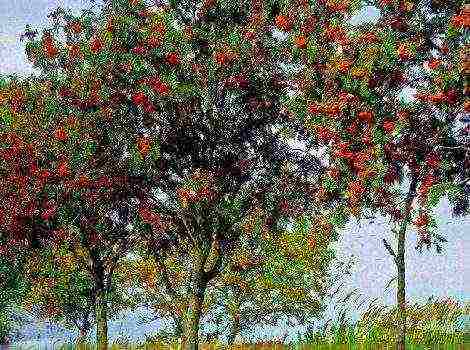Many novice gardeners mistakenly believe that plants need feeding at the initial stage of the growing season and are limited to fertilizing in the spring. However, the end of the season is always accompanied by work to prepare the culture for wintering. And one of the important measures is the introduction of a nutrient mixture to strengthen the root system and immunity in general. How and what to feed garden fruit trees in the fall in the garden, we will talk further.
Enrichment of the soil with nutrients in autumn allows plants to receive the necessary microelements, which strengthen the protective functions, even before the onset of cold weather. A strong tree hibernates without much loss and actively enters the growing season, intensively throwing out new shoots and buds. The lack of stress promotes abundant flowering and a long fruiting period. Good immunity provides resistance to attacks by insects and pathogens.
For each type of fruit tree, it is recommended to use a universal mixture or familiarize yourself with the application rates for one or another mineral.

- For apricot, cherry or plum, liquid feed is more suitable., consisting of 2 st. l. potassium sulfate, 3 tbsp. l. superphosphate and buckets of water. One plant consumes 4 buckets of solution.
- It is better to fertilize quince in a dry way, distributing 30 grams over the stem circle. superphosphate and 20 gr. potassium salt (per 1 m2).
- To fertilize the land on which peaches grow, you need 110-150 grams. superphosphate and 45-65 gr. potassium salt. Mineral substances are embedded in the soil along the stem circle.
Terms for autumn feeding
It is possible to carry out work on preparing plantings for winter all September and part of October, up to the first frost. But it is also not worth delaying the procedure in terms of time, the plant will take time to assimilate the nutrients received during the processing. If you enrich the land before the establishment of stable cold weather, the tree will not have time to gain strength, which means that feeding will be ineffective.
Before applying the nutrient mixture, it is recommended to clean the soil surface from fallen leaves, cut off dried and damaged branches, and repair traces of mechanical damage on the trunk, if any. Also, preparation involves digging in the barrel in a circle with a slightly lower immersion than a shovel bayonet. The result is a near-trunk circle.
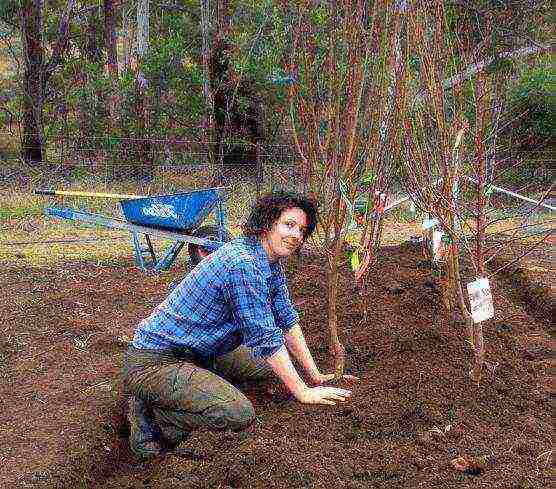
How to fertilize plantings before winter
There are several types of fertilizers, each of which deserves attention. Before using it, it will not be superfluous to familiarize yourself with the advantages of one or another option in order to choose the most effective top dressing.
Mineral autumn dressings in September and October
This type of plant food has a simple chemical composition of trace elements that are safe for plants and the environment. Existing mineral fertilizers are conventionally divided into simple and complex.These definitions are conditional, since even simple options contain a sufficient amount of nutrients for the normal development of a culture. Complex formulations contain 2-3 main components and several additional ones, presented in a small dosage.
The granules can be spread over the soil surface around the trunk of the tree, followed by watering and embedding, or dissolved in water for watering the plant at the root.
For autumn feeding, it is recommended to use the following types of mineral fertilizers:
- complex;
- potash;
- phosphoric.

Phosphorus compounds for fruit trees
The most popular phosphoric fertilizers in horticulture are superphosphate and ammophos. It is believed that it is better to choose double superphosphate, there is less gypsum in it, and the dosage of the main component is increased.
Phosphorus slows down the process of dissolution of compounds used in fertilizing. This increases the effectiveness of the procedure for enriching the soil with nutrients. The advantages of phosphorus formulations are the ability to strengthen the root system, give the plant strength and energy. Also, phosphorus contributes to the accumulation of sugar and protein in the sap of the tree.

Good potash fertilizers
Autumn top dressing with a potash composition allows even fragile plants to survive severe frosts. Fertilizers of two types are produced: chloride and sulfate. Before use, you should familiarize yourself with the susceptibility of each fruit tree to chlorine and sulfur. For example, pear and apple trees react well to chlorine, which cannot be said about fruit bushes.

Combined fertilizers to increase yields
The use of mixed dressings is also important for the autumn preparation for winter. Alternatively, fill in the holes at the roots with a mixture of the following components:
- humus (5 kg);
- superphosphate (50 gr.);
- chloride or potassium sulfate (30 g.).
The composition must first be mixed well so that all substances are distributed evenly. After throwing soil, the pits should be watered.
Another type of combined nutrition is phosphorus-potassium compounds. The balanced product facilitates application and enriches the soil with all the essential valuable minerals.
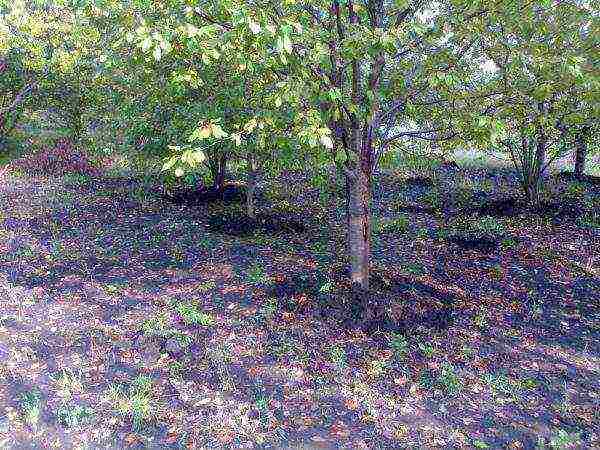
Plant ash for garden autumn feeding
Plant ash is considered a versatile product that can be used dry and dissolved in water. This top dressing is suitable for almost all crops. Thanks to ash, the soil is deoxidized, enriched with trace elements necessary for normal vegetation:
- magnesium;
- calcium;
- potassium;
- zinc;
- copper;
- sulfur and other substances.
When using this fertilizer, it is worth considering that the proportions of the microelements included in the composition vary depending on the feedstock (grass, straw, peat).
Ash feeding has the following advantages:
- stems and trunks of plants are strengthened;
- strengthens the immune system, which increases the chances of survival in the winter;
- the culture resistance to various infections and viruses increases;
- the presence of potassium keeps from rapid growth and premature ripening of fruits;
- the main component is involved in photosynthesis, converting nutrients into starch.
When using plant ash for fertilizing plantings, it is recommended to adhere to the consumption rate: 250 grams per 1 m2.
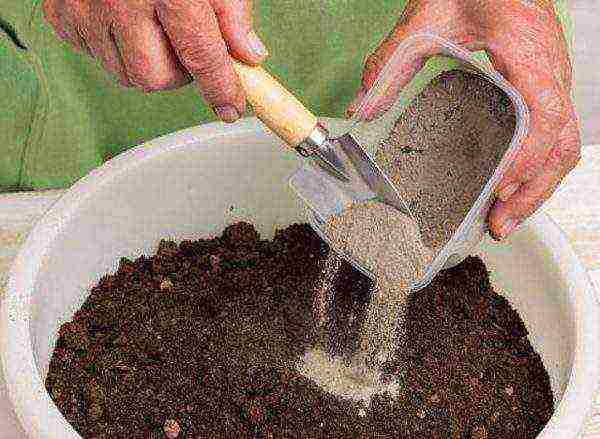
How to feed shrubs with organic matter in the garden
To ensure the nutrition of fruit plantations, it is appropriate to use almost all types of organic fertilizers: humus, compost, manure, bird droppings. Often, organic matter is combined with mineral fertilizers, which creates optimal conditions for saturating the soil with valuable trace elements and maintaining the vitality of plants in the cold season.
Organic fertilizing is more often embedded in the soil around the trunk to a depth of 10-15 cm. But it is also allowed to enrich the soil with a solution prepared on the basis of manure or bird droppings. When making liquid food, it is worth strictly adhering to the consumption rates and dosages so as not to burn the plant.
There is an opinion that fallen leaves can be buried under fruit plantations. In fact, this should not be done, because harmful insects, larvae and microorganisms can settle in the plant residues for the winter. Such proximity to the root system will do more harm than good. But overripe cucumbers or zucchini (without signs of damage by diseases or parasites) can be buried in the periosteal circle, thereby creating a mini compost pit.
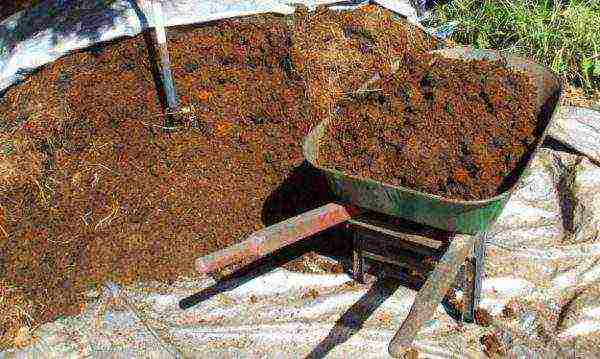
Liquid dressing in the fall
It is necessary to feed it dry. The nutrients are embedded in the soil around the tree trunk or cover the surface of the soil as mulch. If you use the same minerals or organic matter in combination with water, you get no less valuable liquid feed, which is watered at the root of the plants. The effectiveness of such processing lies in the fact that all the components used are distributed evenly in the soil.
The most popular fertilizers are based on poultry manure or manure.... To prepare the solution, first a small part of the organic matter is infused in water for a week, obtaining a concentrated liquid. For further use, you will need to dilute the workpiece with water and water the plants at the root 2-3 times per season, including autumn.
Correctly carried out shrub autumn feeding will strengthen the immunity of fruit trees, which will allow them to survive the painlessly harsh winter and increase the yield. And what kind of fertilizer to choose and apply for fruit trees and berry bushes is up to you!
